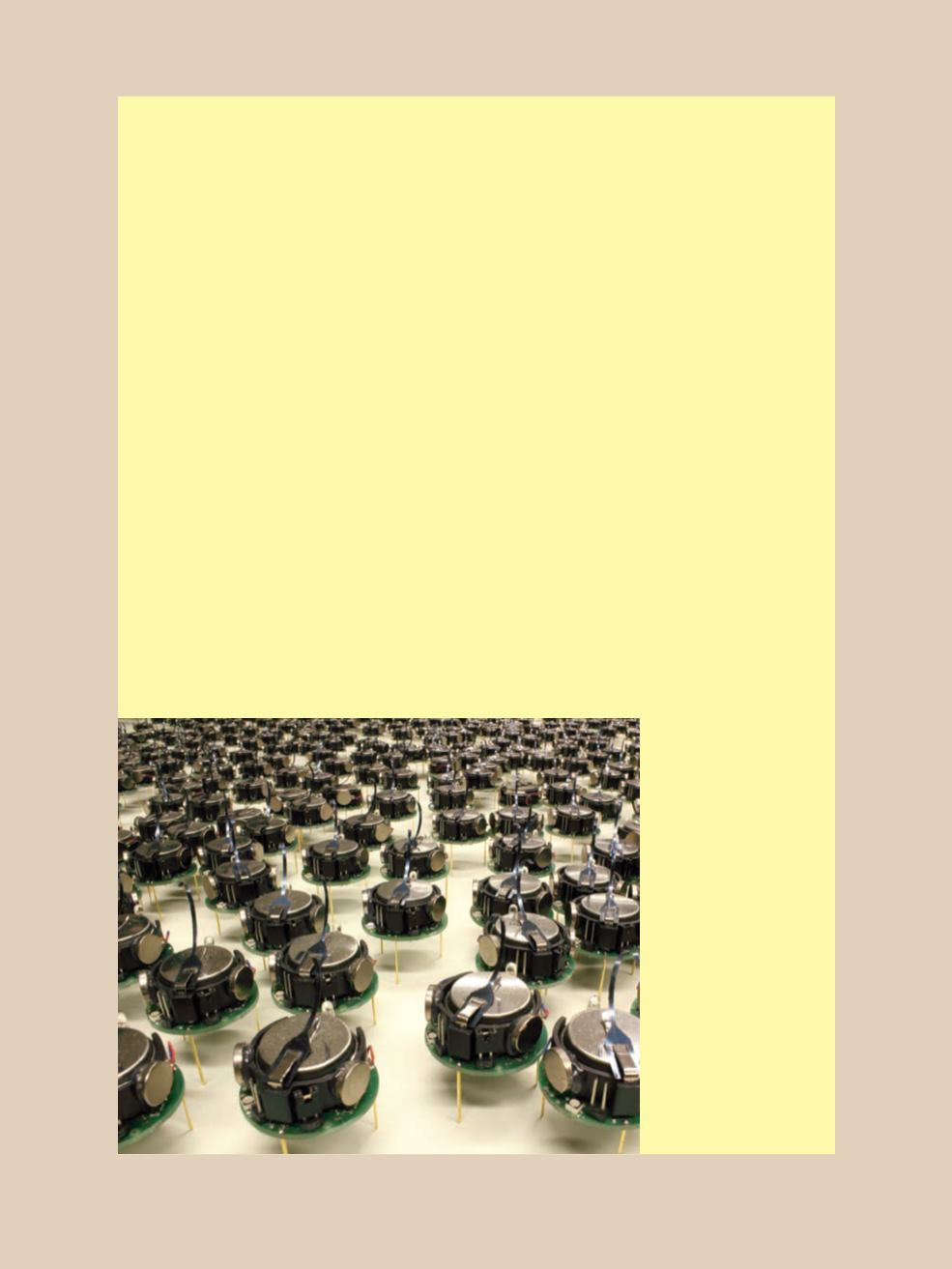
COPY I NG ANT DEC I S I ON MAK I NG
Ant collective intelligence is something that a variety of human researchers are
investigating for high-tech applications. For example, software engineers are interested
in how ants and other social insects carry out their collective intelligence. Using
mathematical equations called algorithms, writers of computer code are using the
science of swarms to allow the software that supports the Internet to deliver packets
of data faster. Improved software will also be key to designing more efficient delivery
routes to help companies get their products to customers more quickly. In Switzerland,
for example, a company called AntOptima is putting ant swarm algorithms to work to
manage high-efficiency delivery of everything from groceries to gasoline.
Robot engineers are also very interested in swarming behavior. They have created
tiny robot swarms, or swarmbots. At Harvard University’s Self-Organizing Systems
Research Group, headed up by engineer Radhika Nagpal, the team has designed and
built kilobots. These collectives include hundreds, even thousands, of tiny robots, each
about the size of a US quarter and perched on three legs. Inspired by social insects,
these kilobot swarms are decentralized—like ants, no single kilobot is in charge. Using
infrared light, engineers send programming code to the kilobots, telling them to Run
Program. The researchers use the kilobots for educational purposes and to research
how swarms work. In the future, the kilobots might be able to scan the environment for
pollutants, help bees pollinate crops, or seek out survivors buried in rubble.
Elsewhere at Harvard University, in the Microrobotics Lab, Robert Wood is
designing robots based on bees. The robobees are lightweight and made of soft
materials. He envisions that one day they will explore situations and places unsafe
for humans: search
and rescue efforts,
toxic environments,
and outer space.
And the robobees
are also great at
getting students
excited about
robotics!
Researchers at
Harvard University
have created robotic
swarms
(left)
to
learn more about
collective intelligence
and how it works.
ARGENTINE ANTS 49


